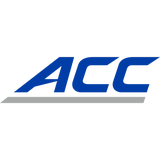
A tale of 2 Masters press centers: From tent to mansion-like
AUGUSTA, Ga. (AP) Augusta National has unveiled a new press center that could be mistaken for a Ritz-Carlton.
Those who covered the Masters dating back to 1989 and earlier remember when the press center at one time was a Quonset hut. And even that was an improvement over the days when reporters were housed in a tent or, before that, working on the balcony of the clubhouse.
But just as the canvas-covered press center gave way to the barrel-shaped, corrugated-steel hut, that structure was replaced in 1990 by a state-of-the-art facility that in turn was supplanted this year by even more posh digs.
The two-story building that was erected in a year looks like a Southern mansion from the outside, and while Masters officials haven't provided figures on the size or the cost, it's not a stretch to call it the Taj Mahal of workrooms.
The rationale?
Don't ask. All Augusta National Chairman Billy Payne will say is the club built it out of ''the principle of constant improvement. We know no other way.''
With a little imagination, one could shoehorn a short par-3 hole into the central work area. There are plush chairs and two screens at every wood-paneled desk and just steps away, a lounge, full-service restaurant, takeout food counter, snazzy stone porch, locker room with showers and interview room the United Nations would envy.
Whether it was guilt over all that, or simply nostalgia, a number of veteran sports writers have been dusting off memories and telling stories about what great places the press center's predecessors were. Never mind that the hut was dark, hot, cramped, cigarette smoke-filled and maddeningly noisy whenever it rained.
''What I remember most,'' former Associated Press golf writer Ron Sirak chuckled, ''was the 200-foot urinal.''
OK, he's exaggerating - slightly.
But the long tin trough was emblematic of the bare-necessities character of the place, and it was still better than the tent. There was a scoreboard in front, a bank of telephones lining the right side and a small room at the back with folding tables, atop which were boxes of Krispy Kreme doughnuts for breakfast and pimento cheese and egg salad sandwiches for lunch.
Around 100 reporters could be wedged into the hut after additions on either side. There wasn't a formal hierarchy to the seating chart, but rookies usually found themselves assigned to one of the new seating sections, informally known as ''the attic.''
Grant Hall of the Northwest Arkansas Democrat-Gazette remembered how the guys up top watched giants of the business - guys like Dan Jenkins, then with Sports Illustrated and the late Herbert Warren Wind of the New Yorker (who came up with the moniker ''Amen Corner'' for holes 11 through 13) - waiting for their chance to move toward the front and claim a seat alongside them.
''We did have one advantage,'' Hall remembered. ''We were a lot closer to the sandwiches.''
Jenkins, who covered his first Masters in 1951 for the old Ft. Worth (Texas) Press, remembers when the writers worked on the balcony of the Augusta National clubhouse, then yelled down for a cold beer or two that was hoisted up in a bucket.
''The hut was a big improvement,'' he said, laughing, ''but there was one thing I didn't like. In the hut, you could actually see the Western Union operators at the back transmitting our stories.
''That made me nervous,'' he added, ''because I always got the feeling they were doing some editing of their own on the fly.''
An interview room was attached to the hut, complete with a tiny black-and-white TV that hung from the ceiling just over the interviewee's right shoulder. The new press room has high-definition screens on both outside walls that are 35 feet wide.
''I don't remember who we were interviewing,'' Golf Digest editor Jerry Tarde said about the hut, ''but I do remember that Tom Weiskopf was playing the 12th. He hit the ball into the pond in front of the green, turned to the caddie and stuck out his hand, dropped the ball and hit it into the water again. It went on time after time.''
Instant replay, even for live televised sporting events, was not that common at the time. But Tarde and the other reporters keeping an eye on the TV during the interview simply assumed they were seeing the same shot over and over.
''It wasn't until the interview ended,'' Tarde said, ''that we found out Weiskopf had made 13 on the hole.''
Reporters bolted out of the hut, raced to the farthest corner of Augusta National and pushed toward the front of the gallery hoping to catch a glimpse of Weiskopf. Despite all the improvements, that much hasn't changed.
Unlike just about every other golf tournament in the world, the Masters still refuses to issue armbands that would allow reporters inside the ropes. Considering the amenities at their disposal now, some will never leave the press center.
But plenty more would echo what Pulitzer Prize-winning New York Times columnist Dave Anderson said when the club touted the move from the Quonset hut to the press center that served as a bridge between those days and these:
''I'd trade this place in a minute,'' Anderson said, ''for an armband.''
